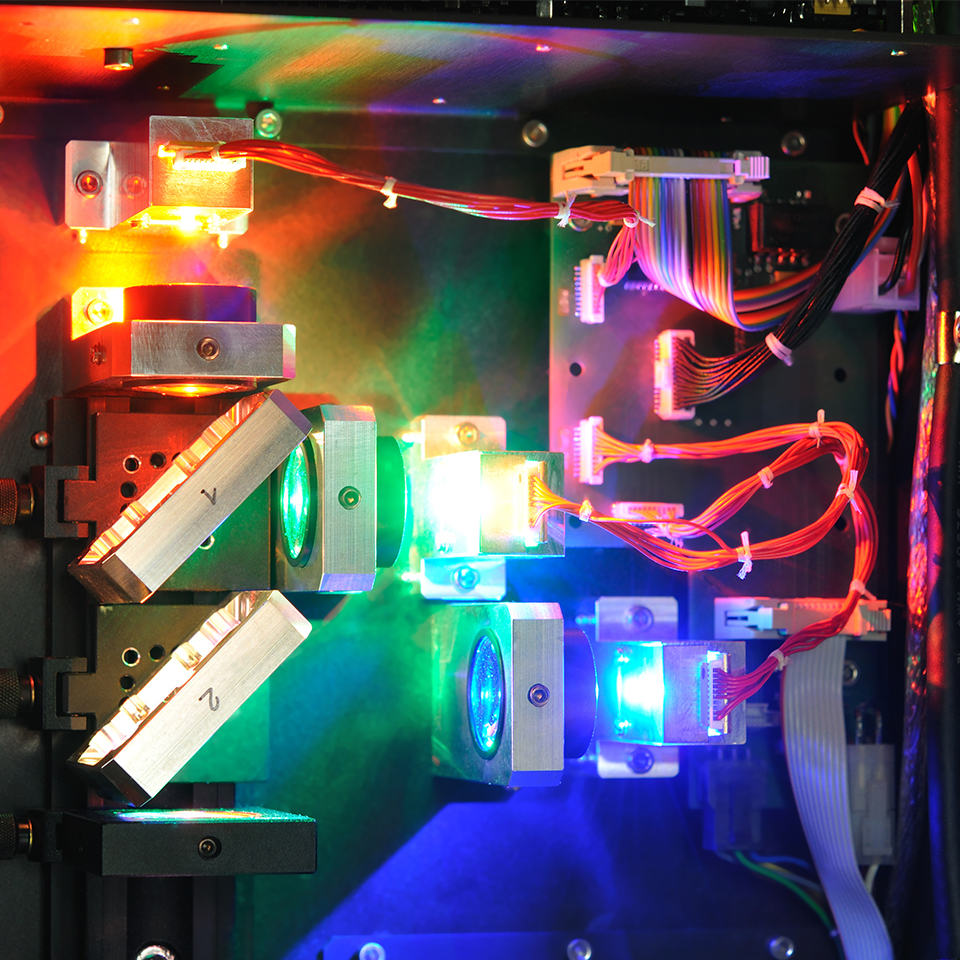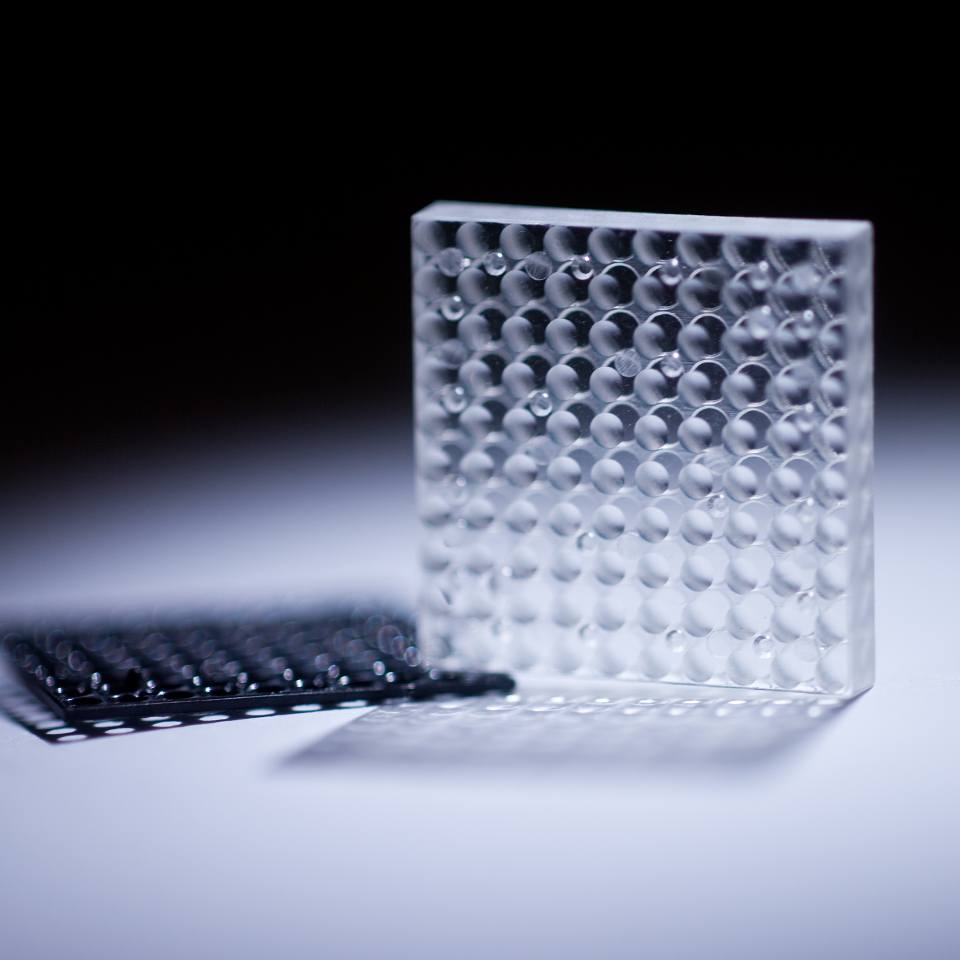3D technology
REALEYES 3D technology is based on light field technology, thanks to which high quality three-dimensional images can be produced today.

The REALEYES 3D lens structure: 253,000 micro cameras in one square meter. Each individual lens depicts the complete frame, which each differ by just a few thousandths. In turn, each frame consists of 65,000 pixels - a total data volume of 232 gigabytes.

The patented REALEYES high-tech imagesetter for 3D motifs: Quick, on-the-fly exposure, precise positioning accurate to one micron and reliable operation - 253,000 frames for one 3D motif in DIN A0 format (33.1 x 46.8 inches).
The basis of the patented REALEYES 3D technology is an optical system, which consists of a multitude of macro lenses the size of a match head. That adds up to 253,000 lenses in one square meter. The lenses are manufactured with an accuracy of less than one micron, which is a decisive factor in producing high quality 3D displays. REALEYES uses a special film as a storage medium, which is situated behind the macro lenses and is capable of storing large amounts of data. This is necessary, given that each of the 253,000 lenses depicts the complete frame, which differs from its adjacent lens by a few thousandths and in turn, each frame consists of 65,000 pixels - which results in a total data volume of 232 gigabytes.

REALEYES 3D lenses with an accuracy of less than one micron. Crucial in producing high quality 3D displays.
That is the only way to make it seem as if the objects are protruding one meter from the screen and at the same time, appear to be so realistic that the viewer actually thinks he or she could touch them.

The REALEYES 3D Display. The objects float in space up to one meter from the screen and have an infinite spatial depth.
We here at REALEYES are currently working on turning the vision of the next generation display into reality by attempting to develop the digital light field display with live content, i.e. a 3D display with moving images. The greatest technical challenge in this respect lies in the transportation and storing of large amounts of data as well as the development of suitable image carriers. Ultimately, the outcome must be a system which enables the exchange and storage of a data packet of 232 gigabytes 25 times per second. For the moment, it’s merely a vision for the future. And as they say: Nothing is impossible. It’s only a question of time.
